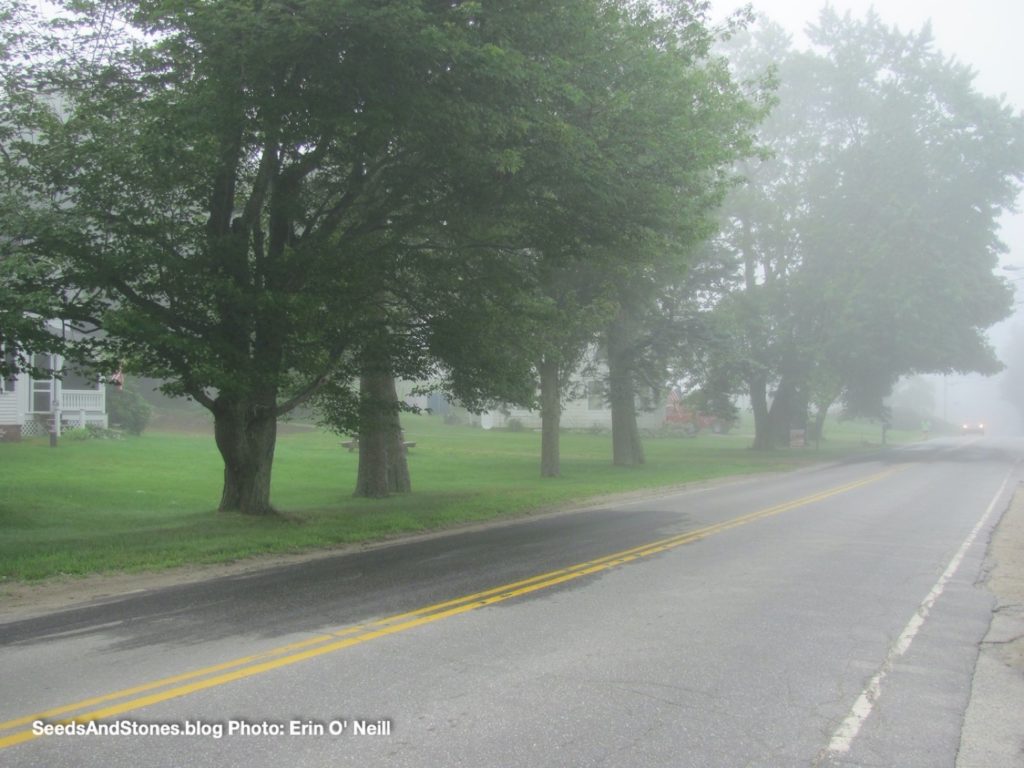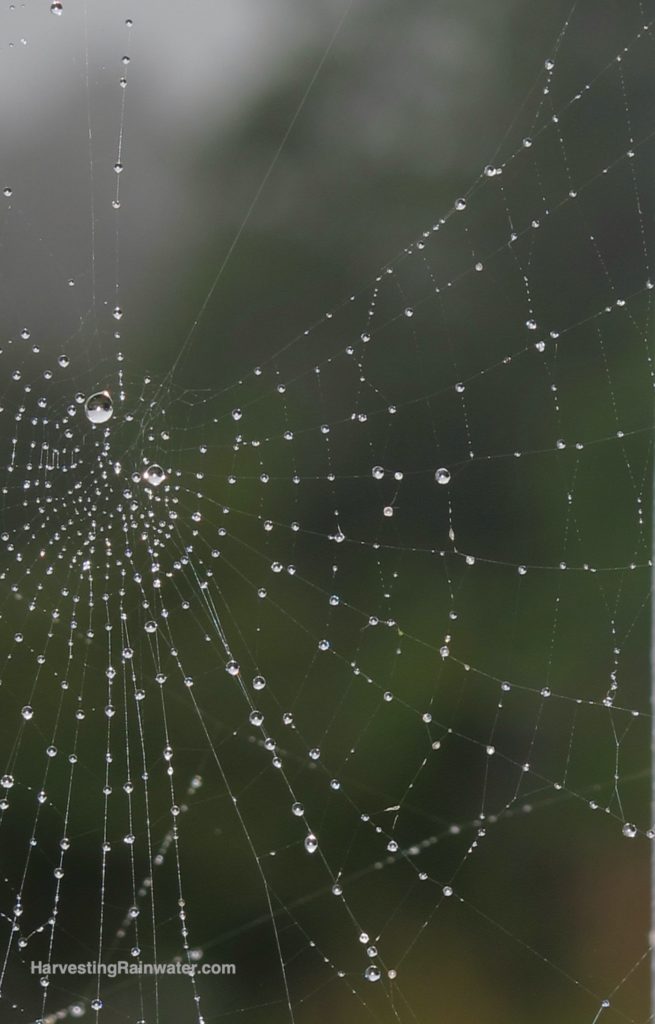Fog Harvesting
Fog is a cloud of tiny water droplets at, or just above, the Earth’s surface. Fog harvesting can occur when the tiny water droplets in the fog form larger drops when they come in contact with, and collect on, objects. Some objects are better than others at harvesting this fog moisture.
For example, many native plants that grow in areas where fog is a regular occurrence have adapted their leaf or thorn structure to harvest fog. The fog gathers/precipitates on the rough/fine surface area of the leaves then drips/rains down to the soil as “fog precipitation.”
Got fog? Plant and grow living fog-harvesters with multiple benefits, and you’ll end up increasing your rainfall—or at least your fogfall—and more.
Such was the case with a gardener I met in San Diego, California who planted a shelterbelt of native food- and medicinal producing fog-harvesting trees and shrubs on the west/sea side of his vegetable garden. The shelterbelt increased his garden’s production by reducing evaporative water loss to the shaded out hot afternoon sun and deflected winds. Production was boosted still more by the harvested fogfall.
See the Wind & Snow Harvesting section for links to shelterbelt placement and design.

Rather than building a roof from which you can capture water, in the right fog-rich areas it may be wiser to plant, or steward, fog-harvesting vegetation—that’s a living system.
Coastal ridgeline forests—where fog gathers—are ideal for collecting fog, and the fog harvested by the vegetation typically contributes significant volumes of water to groundwater, springs, and creeks. So, when these forests are reduced or removed, the inputs to groundwater, springs, and creeks are reduced—sometimes to the point that the spring and creek flows cease as groundwater levels drop. But if we help bring back these fog-harvesting plants, the health of groundwater, springs, and creeks can be regained.
Manufactured fog-catching sails (which mimic fog-harvesting spider webs) with gutters below are a non-living means of harvesting fog, though they can be used to capture water to irrigate and reestablish native living fog-harvesting plants. That’s the case in Bellavista, Peru, where over 800 river she-oaks have been planted and irrigated during the establishment period with fog harvested from a human-made fog-harvesting sail.1
Such fog-catching sails can also provide drinking water for people and animals, or even the brewing of award-winning fog beer as is the case with the Atrapaniebla Brewery in Ovalle, Chile.

Photo: Brad Lancaster
REFERENCES:
- “Fog Catchers Bring Water to Parched Villages,” National Geographic, July 9, 2009, accessed 7-21-14. Article is no longer available on line, but a synopsis can be found at https://erengineering.wordpress.com/2013/04/22/ere-student-marrs-on-wre-article-fog-catchers-bring-water-to-parched-villages/
